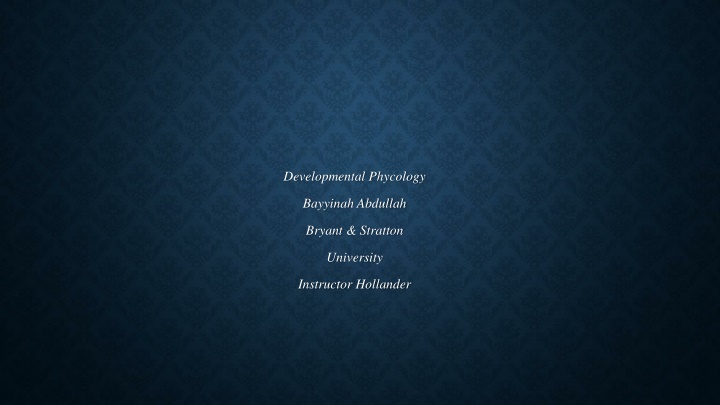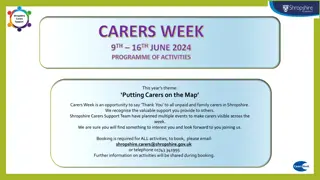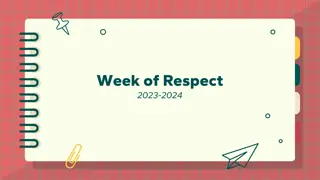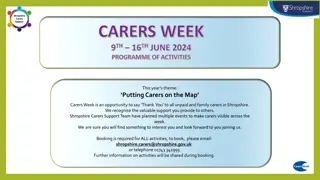
Developmental Psychology in Cerebral Palsy: Impact on Infancy, Cognitive Functioning, and Social Limitations
Explore the impact of developmental psychology in cerebral palsy, focusing on infancy signs, cognitive functioning challenges, and social limitations. Learn how different forms of development can be altered and understand the daily experiences of individuals with developmental delays. Gain insights on early detection and management strategies.
Download Presentation

Please find below an Image/Link to download the presentation.
The content on the website is provided AS IS for your information and personal use only. It may not be sold, licensed, or shared on other websites without obtaining consent from the author. If you encounter any issues during the download, it is possible that the publisher has removed the file from their server.
You are allowed to download the files provided on this website for personal or commercial use, subject to the condition that they are used lawfully. All files are the property of their respective owners.
The content on the website is provided AS IS for your information and personal use only. It may not be sold, licensed, or shared on other websites without obtaining consent from the author.
E N D
Presentation Transcript
Developmental Phycology Bayyinah Abdullah Bryant & Stratton University Instructor Hollander
This is a PowerPoint that breaks down the manse defend aspects of devilment from a psychological prospective. I will be defining different forms of development and how developments can be altered in a fetal stage before birth. I have researched of how people living with different devlopmental delays or inturaruiop in normal development and there ever day experiences are with their developmental limitation
INFANCY AND SIGNS OF CEREBRAL PALSY Infancy and ceramal palsy physical limitations When the baby is picked up while lying on their back, they cannot hold their head up. While being held, the baby may also overextend their back and neck as though they are pulling away. The baby feels stiff (hypertonic) or floppy (hypotonic). When the baby is picked up, the legs get stiff or cross/scissor. The baby has cortical thumbs (meaning that the thumbs are persistently bent towards the center of the palm). Children are often not diagnosed with cerebral palsy until about one to two years of age when it becomes clear that they are missing milestones. Media Example: www.cerebralpalsyfoundation.org/early-detection
COGNITIVE FUNCTIONING IN CHILDREN WITH CEREBRAL PALSY Cognitive functioning Children with cerebral palsy (CP) have an increased risk of cognitive impairments. 50% of people with CP have some sort of learning impairment. Although learning disabilities are common among cerebral palsy patients, they re also common among those with brain injuries in general. Children with cerebral palsy and a learning disorder still have cognitive functioning and are very much capable of learning, sensing, and reasoning. Depending on the strength of connectivity within the brain, they may require more time and effort to process and learn new skills. Because learning disabilities occur so frequently among children with cerebral palsy, it s important to understand what early signs of a learning impairment can look like. Up next, we ll go over how to identify a learning disability in children with cerebral palsy. Media Example: Including Samuel photo grouped film
SOCIAL LIMITATIONS WITH CEREBRAL PALSY Middle Child The creation and building of social relationships are one of many milestones that children affected by cerebral palsy may have difficulty in achieving. But how exactly does cerebral palsy affect social development, especially as children are learning how to walk, talk, and interact with others. Some social issues faced by children with cerebral palsy can include: Poor control of the tongue and/or mouth muscles that affect speech; Difficulty in being understood by others, or effectively communicating thoughts; Hearing loss and/or vision problems; Delays in emotional and physical development; Attention and behavioral deficiencies; and Exclusion from social activities or being separated from others. Exposing your child and other children to differences in communication style and social development styles has been proven to help break down pre-conceived notions of children affected by birth injuries, and can help your child reach their maximum potential in any social situation. Media Example: My Left Foot
ADOLESCENTS AND PHYSICAL LIMITATION WITH CEREBRAL PALSY The three types of cerebral palsy are: Spastic (pronounced: SPASS-tik) CP is the most common type of CP. People with spastic CP can't relax their muscles or the muscles may be stiff. Athetoid (pronounced: ATH-uh-toid) CP affects the ability to control the muscles of the body. A person's arms or legs may flutter and move suddenly. Ataxic (pronounced: ay-TAK-sik). People with ataxic CP have problems with balance and coordination. Their movements may seem shaky. The physical limitation with cerebral palsey and adolescents can range form minor to sever. With early intervention and therapy adolescents living with cerebral palsey can allow them to have a successful life Media example: King Gump YouTube
ADULTHOOD CEREBRAL PALSY AND MENTAL HEALTH A condition like cerebral palsy can make the stresses of life a bit more overwhelming. Similarly, individuals with CP have a tendency to become shy in social situations out of fear of being bullied or teased by others. This can lead to the development of an array of mental health conditions. The most common disorders found in adults with CP are depression and anxiety disorders. If you suspect that your son or daughter has developed a mental health condition as they enter adulthood, there are many important warning signs to look out for. Early signs of depression are: Not sleeping or sleeping too much Not eating or eating too much (binge-eating disorder) Talking about death or self-harming A lack of desire to complete activities that once brought enjoyment Early signs of anxiety are: Rapid heart beat Being jumpy or unable to sit still Dizziness, shakiness, excessive sweating or nausea Avoiding doing things involving other people or unfamiliar places Being overly worried about small things
CEREBRAL PALSEY AND EMOTIONAL EFFECTS Middle Adulthood The emotional effects of cerebral palsy are often a result of feeling misunderstood or alone. Adverse emotional effects like withdrawn behavior, anxiety, depression, or angry outbursts are commonly experienced as a result of motor impairments. Even children with mild motor impairments can experience psychological symptoms. Poor Communication Cerebral palsy can affect a child s oral motor functioning and make it difficult for them to speak. Having to continually repeat or further elaborate until someone finally understands what you re trying to say can be very frustrating and tiresome. Furthermore, if the child is completely non-verbal, this frustration can be compounded if they don t have the assistance or devices required to make their needs known. MEDIA EXAMPLE: A Simple act
SOCIAL COMMUNICATION WITH ADULTS AND CEREBRAL PALSEY Between about 20 to 40 years old, most adults with cerebral palsy will experience some form of premature aging. This is due to the excess strain and stress their bodies go through just to complete everyday tasks. For people with CP, walking up a small flight of stairs may require all the energy they have DETERIORATION IN PHYSICAL ACTIVITY In adults with CP, physical activity was reported to decrease with increasing GMFCS levels There is a lack of evidence supporting the efficacy of the intervention to sustain and increase habitual physical activities in children and youth with CP The effect of deterioration in physical activity or exercise intervention on long-term health in patients with CP has yet to be elucidated. In line with the previous review, the Cochrane study group revealed that there is low-to-very low-quality evidence supporting the benefit of physical activity in children in terms of improved gross motor function and gait speed. Although few studies have examined the effects of physical activity in adulthood, increased physical fitness in young adults with spastic CP was effective in improving fatigue, mental health, and social participation without a significant change in gross motor function. Although physical activity is expected to have a significant long-term impact on adults compared with pediatric populations, studies have yet to investigate the effects of physical activity in adults. A comprehensive review and further analysis of the effects of physical activity on adults with CP are needed. Media Example: Jimmy Movie






















